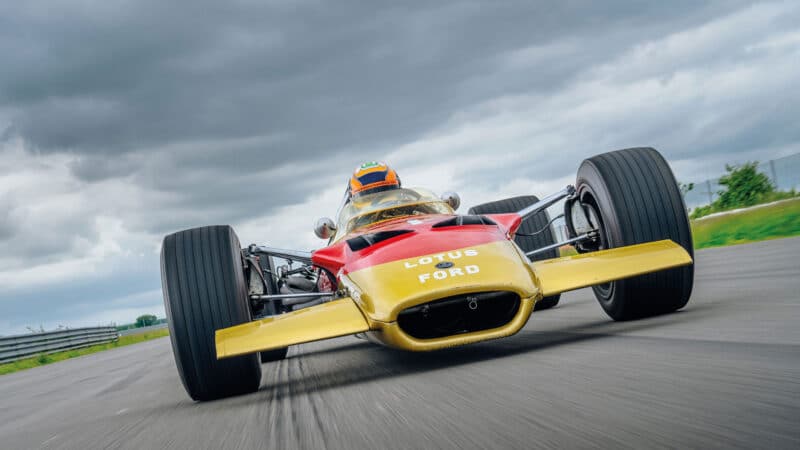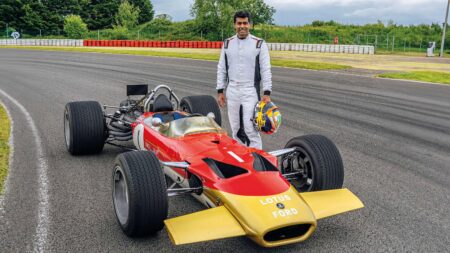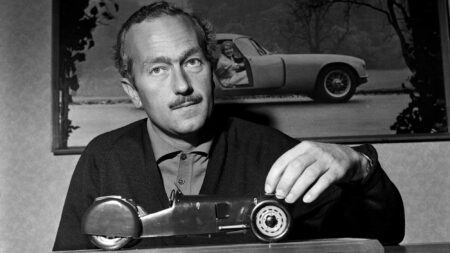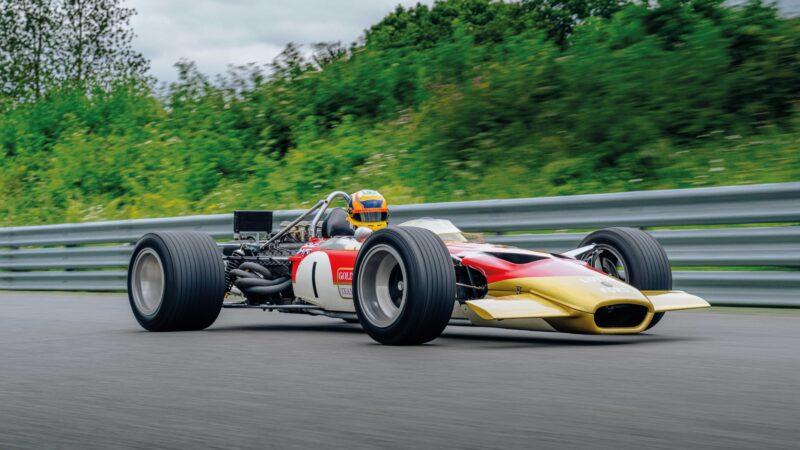Its sympathetic torque curve – in contrast to the Eagle and Honda engines of the time which had more power but delivered less at the lower end – made the car a potent tool in the hands of its champions works Lotus drivers.
It’s something Chandhok first points to in describing his experience of getting behind the wheel.
“It’s the driveability and linear torque curve which makes it an absolute pleasure,” he says.
“In an era where the cars didn’t have downforce and balancing the rear of the car on the throttle was an art form, having an engine that was predictable in its response must have been a huge advantage.
“As you start to accelerate from the apex, the amount of power supersedes the amount of grip and the rear of the car starts to step out of line. Having a torque curve without any obvious dips means that you’re able to start using the loud pedal and just control the wheelspin in a way that after a few laps you find yourself using the throttle to rotate the car around.”
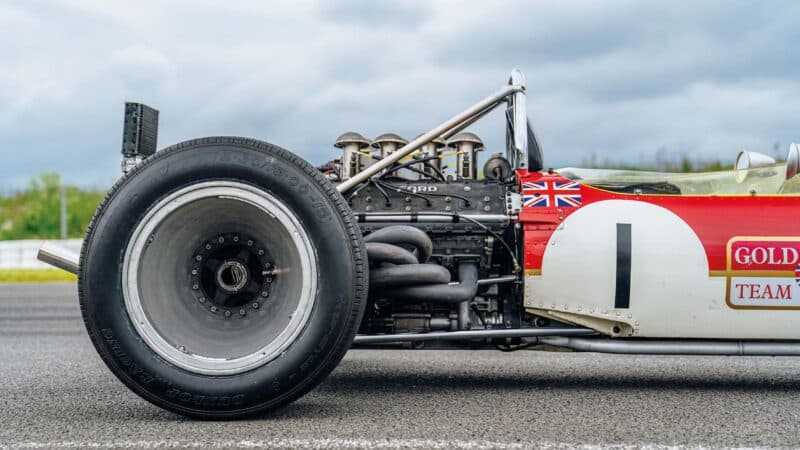
DFV integration was key to success
Jayson Fong
It doesn’t take long for the former F1 and Le Mans driver to get comfortable on the Hethel test track.
“Before long, you start to dream you’re holding the slides like Jimmy Clark – without a fraction of the great man’s actual talent of course.
“Any mid-corner understeer can be balanced up with your right foot, getting the rear of the car to come around and open up the trajectory to get on the straight quickly.
